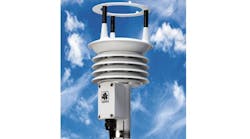Most government agencies refer to their winter operations in terms of fighting snow. This has become such a common term that the word “snow fighter” has been used to describe people who work in winter operations. Although this is just a buzzword, it does suggest that there is a fight and a corresponding winner and loser.
Given that winter answers the bell every year, I think it is safe to say that we are engaged in a “fight” that will never end. With that said, it may behoove us to learn how to manage, rather than fight against, winter. The term “manage” has a more positive overtone and leads to the belief that we understand and embrace the challenges that winter poses.
This philosophy of managing versus fighting winter is evolving in the Illinois Department of Transportation’s (IDOT) District Four Office in Peoria. District Four is located in west central Illinois and experiences yearly snowfall amounts of 20 to 30 in. IDOT District Four management has realized that rising fuel and salt prices combined with high motorist expectations mandate that we become more active winter managers and develop winter operations programs that reflect an active management position. In the following, I will explain the different facets of this philosophy.
How they’re made
With regard to athletes, they say all great players are made in the off-season. This also holds true with winter operations personnel. Training in the off-season creates better managers and snowplow operators. The success of any program is directly related to the knowledge base of those individuals responsible for implementation of the program. The cornerstone of an active management philosophy is an aggressive training program.
Our training program focuses on weather forecast analysis, chemical usage, plowing techniques and operation of the spreader control system. We break the training of these topics down into two separate half-day sessions.
Weather forecast analyses, chemical usage and plowing techniques are taught together. These three topics are taught together due to the fact that they are intertwined. The second half-day session focuses on the chemical spreader control systems. With the goal of increasing the overall knowledge base in these specific areas, snowplow operators and managers alike receive the same training. We want each level of the process to understand every other level so that the operation is integrated from top to bottom.
Most people who work in winter operations are consumed with absorbing as much weather forecast information as they can. The question is, do they truly understand how to interpret the information to make decisions that reflect the philosophy behind your agency’s winter maintenance program? Can your staff break weather data down to the corresponding chemical types and application rates along with the proper plowing techniques required to achieve your agency’s level-of-service standards?
To ensure that our operations reflect our agency’s philosophies, we are implementing an annual training program to educate our personnel on how to relate the weather forecast to specific chemical types and application rates and the corresponding plowing techniques. This classroom-style training includes scientific testing data on the effectiveness of liquid and dry chemicals, videos depicting numerous plowing techniques and real-world forecast scenarios to tie all of the information together. There is an abundance of good weather information available to your staff. It is extremely important that they receive specific training on how to interpret this information to achieve your agency’s winter maintenance goals.
The second half-day session focuses on the chemical spreader control systems. We are currently using the Dickey-John Control Point system. This training session is a combination of classroom material and hands-on training. The entire staff, including supervisors and operators, receives training on the idiosyncrasies of operating the system and are tested on different scenarios using spreader control simulators. Our frontline managers and mechanics also are trained on how to maintain, repair, calibrate and program the systems. Efficient operation of your fleet’s spreader control systems is paramount to successfully managing your chemical usage.
The most difficult task in implementing a successful training program is not the development of the training sessions, but ensuring that the information is received in a positive manner by your staff. We have found that our training material is received much better when presented by experienced snowplow operators rather than by management staff who have never plowed snow. Utilizing experienced snowplow operators to lead your training will bring instant credibility and acceptance to your program. If your frontline managers and operators accept what they are being taught, your agency’s methodologies will have a better chance of successful implementation.
Strong front coming in
After training your personnel on how to successfully analyze weather forecast data, it is critical to your operation that they receive accurate and timely information. We utilize a roadway weather information system (RWIS), a contracted forecaster, a satellite-based radar system and pavement temperature sensors installed in the trucks. We feel that these four different sources of information provide us all the weather data we need to make informed decisions.
The RWIS is the foundation of our weather information data. IDOT has 48 sites that are strategically located throughout the state. The RWIS sites provide real-time weather information including precipitation type and intensity, wind speed and direction and pavement and air temperature. This data is easily accessible to all of our winter operations personnel 24 hours a day. The RWIS has proven to be a reliable and effective tool to gather real-time weather information.
Although the RWIS data is real-time and easily accessible, it does not provide a window into the future. We feel that it is important to have a professional meteorologist provide specific weather forecasts for the 12 counties in our area of responsibility. Surface Systems Inc. (SSI) is currently contracted to provide such forecasts. As a requirement of the contract, we receive forecasts every four hours during the winter period. During a storm event, the forecast frequency increases to every two hours. The forecasters use the real-time RWIS data along with other meteorological data to generate accurate forecasts. SSI not only provides a current forecast but also hour-by-hour forecasts for precipitation type and amounts, wind speed and direction and pavement and air temperatures for the upcoming 24-hour period. The forecasts are e-mailed directly to all winter operations personnel. Therefore, they are accessible by computer in the field facilities and also on their wireless Blackberry devices. There is an abundance of weather information available on the Internet, but it is not customized to your needs or specific to your area of responsibility. We feel that the customized forecasts that are specific to our counties are a necessity.
In combination with the real-time RWIS data and customized weather forecasts, we use a satellite-based radar system. The system we currently use is provided by DTN/Meteorlogix. Each of our winter maintenance facilities has access to the radar system. The system not only provides color radar, but it also provides a forecast that is used by our personnel as a second opinion to our contracted forecast. This easy-to-use system is tailored to the transportation industry’s needs.
We consistently talk to our staff about making chemical application rate decisions based on pavement temperatures. Therefore, it is extremely important to have accurate, real-time pavement temperatures available for their use.
Although RWIS provides pavement temperature data, it is only accessible to supervisors via computer or Blackberry devices. It is not available to the individual operators while they are on their snow routes. To provide each operator with route-specific, real-time pavement temperatures, we are progressing toward installing pavement temperature sensors on every truck. This information allows operators to customize their application rates to the actual pavement temperature on their snow route.
Some people might question the cost/benefit ratio of installing pavement temperature sensors on every truck. We have found the cost of the sensor can be recovered in one winter season by varying chemical application rates based on pavement temperature rather than trying to use one high application rate in all situations. Pavement temperature sensors are another tool that can be used to actively manage a winter event.
Given that the weather dictates how we allocate our resources, timely and accurate weather information is critical to the success of winter operations. We continue to investigate new technologies in weather forecasting in an effort to improve the accuracy of the information our personnel are using to make decisions.
This past winter, we tested an Internet-based “enhanced” radar system. This system provides graphical weather data, radar projection into the future and the ability to customize for individual users. The preliminary feedback was positive. We are currently analyzing the cost/benefit ratio to determine if we will expand its use in the future. Knowing that the success of any winter maintenance program hinges on the timeliness and accuracy of the weather information used by the decision makers, I would encourage all winter operation entities to continue to look for ways to improve in this area.
How do they do it?
Your staff is now well trained, and they have all the weather information required to make sound winter operations decisions. Will they actually apply what they have learned when the snow is hitting the ground, or will they revert back to what they have always done?
I can answer that question based on my own experience with my personnel. Without active field managers, a significant number will revert back to what they have always done. The old ways may produce successful results, but are more than likely inefficient.
We have found operators applying twice as much salt as needed. Although their snow route was clear of snow and ice, the results were achieved at a higher cost than necessary. We also have found operators not knowing when it is time to plow without applying salt. They continue to spread salt during intense snowfall and plow it off before it has time to be effective. Active field supervisors can remedy these problems by communicating forecasts and the corresponding techniques to the operators before and during a storm event.
To ensure that your agency’s methodologies are being implemented, your frontline supervisors need to be active managers. With increased level-of-service expectations and tight winter operations budgets, you cannot afford to have frontline supervisors who sit in their office, periodically look at the radar screen and trust that all of their operators are making correct decisions.
It is critical to the operation that they are diligent about analyzing the weather information throughout the entire event. Determining chemical types and rates and plowing techniques should not be a guessing game. They need to apply what they have learned regarding weather information when making these decisions.
Success of your winter operations program hinges on the ability of your frontline supervisors to make sound decisions throughout storm events. Supervisors not only need to be decisive but also aggressive with regard to communicating weather information and chemical and plowing strategies to the operators. They cannot assume every operator knows exactly what needs to be done in every situation or that each operator has retained everything they have been taught. Effective communication between supervisors and operators throughout an event is another key component in a successful operation.
Post reaction
The final step in implementing a successful winter operations program is having a system to evaluate your performance after a storm event. Post-storm evaluation has two phases. The most critical phase is the accurate collection of data during the storm event. The second phase is taking the time to thoroughly evaluate the data and make adjustments to your operation to minimize deficiencies.
Evaluating performance after each storm event is an effective method of analyzing new equipment and techniques and to ensure that your methodologies are being implemented.
Post-storm evaluation is another evolving aspect of our active management program. We are in the process of formalizing data collection procedures and developing a user-friendly post-storm report. We have recognized that post-storm evaluations will only be performed if the appropriate information is organized and can be quickly analyzed.
Our post-storm report will include the following information for each county’s operation: labor, equipment and material cost data, amount of time required to achieve bare pavement conditions and a storm severity index. Analyzing a post-storm report reveals problem or success areas. To further analyze specific areas, data is retrieved from individual truck spreader control systems. The spreader control data includes detailed information on chemical usage. This information is analyzed against the corresponding pavement temperatures to determine which operators are actually implementing our program’s methodologies.
Post-storm evaluation requires a dedicated commitment from your management team. We consider this time commitment an investment toward the overall success of our winter maintenance program.
Do it different
More than likely, your winter operations have the biggest impact on your operating budget. With that in mind, you cannot afford to not have an actively managed winter operations program.
In this article, I have focused on the management aspect of our program. We also are becoming more aggressive in experimenting with different plow sizes and configurations and different liquid chemical types, application rates and dispensing equipment. Although we spend a substantial amount of time researching and experimenting to advance our equipment and chemical technology, the backbone of our winter operations program is the active management philosophy.
New technology is important to advancing winter operations forward, but it takes a backseat to understanding and managing what we already have in place.
I will leave you with a quote from inspirational speaker Tony Robbins, “If you do what you’ve always done, you’ll get what you’ve always gotten.” Given that we all have tighter budgets and higher motorist expectations, we cannot continue to do what we have always done.


